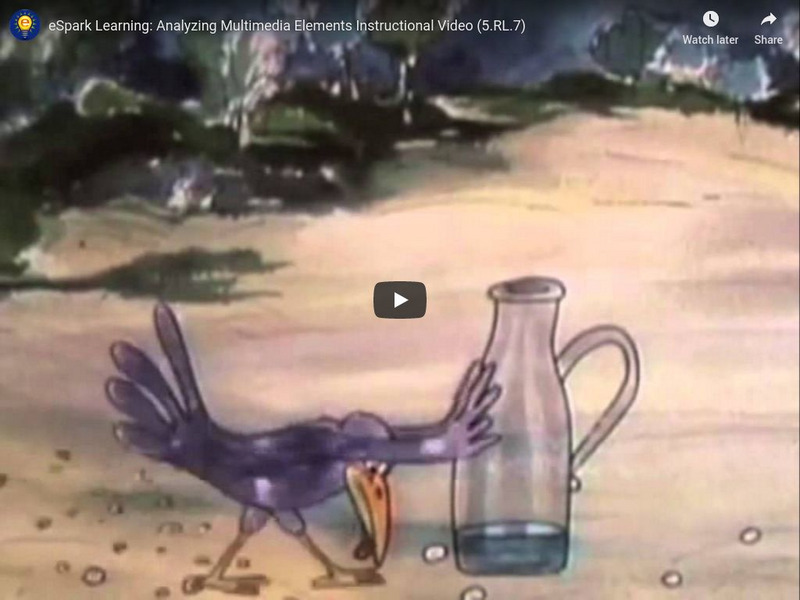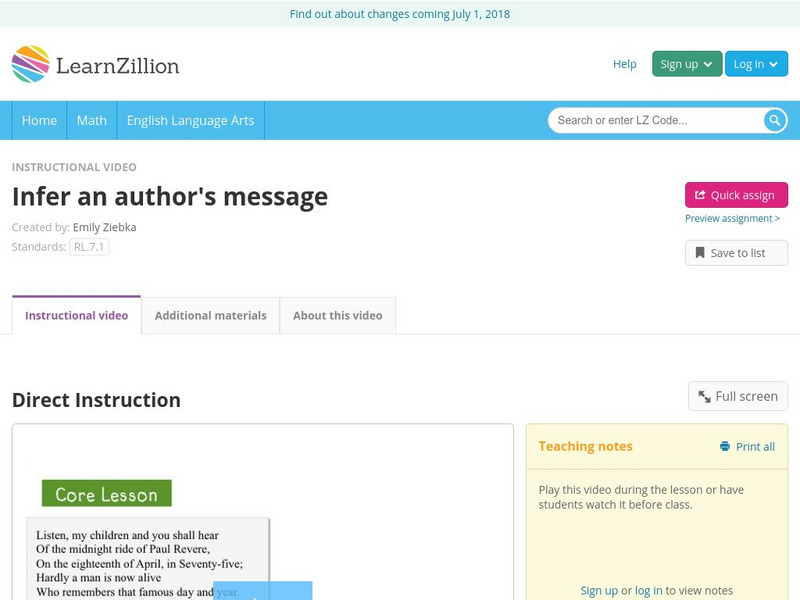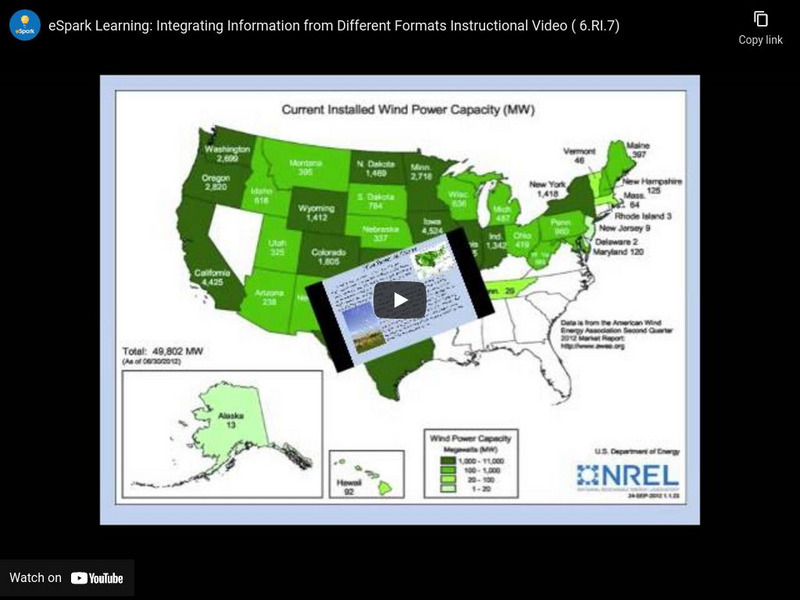Hi, what do you want to do?
Lit2Go
The Fisher and the Little Fish
A resource on Aesop's "The Fisher and the Little Fish" is off the hook! Learn what happens when a small fish implores for its freedom, promising to return when it can be a more delectable meal, with an audio version of the fable and a...
Lit2Go
The Fawn and His Mother
Teach your class about fear and cowardice from the perspective of a doe and her fawn. A teaching resource based on Aesop's "The Fawn and His Mother" includes an audio version of the fable, a text passage, and a reading activity in which...
Lit2Go
The Father and His Sons
What do a family and a bundle of sticks have in common? They can't be broken. After reading Aesop's "The Father and His Sons," pupils complete a graphic organizer that explores the cause/effect structure and theme of the story.
Lit2Go
The Donkey in the Lion’s Skin
Have you ever tried to be someone you're not? Aesop's "The Donkey in the Lion's Skin" features a donkey who dresses up as a frightening predator—but whose loud bray betrays his identity. Learners stop reading before they reach the ending...
Lit2Go
The Crow and the Pitcher
Critical thinking can save lives! After listening to an audio retelling of Aesop's The Crow and the Pitcher, , learners build a mobile to storyboard the events from the plot.
Lit2Go
The Lion and the Mouse
Have a roaring good time teaching narrative writing with Aesop's "The Lion and the Mouse.” The passage contains an audio recording that differentiates instruction for all readers with a written transcript of the story. Learners conclude...
Lit2Go
The Fox and the Stork
Forget the Golden Rule! Aesop's fable "The Fox and the Stork" explores what happens when a stork, treated poorly at the fox's meal, hosts his own dinner. Learners listen to an audio version of the story before examining the causes and...
Lit2Go
The Donkey and the Grasshopper
Patience, young grasshopper ... the lesson provides a great experience with narrative writing using an installment from a series of audiobooks of Aesop's Fables. The 57-word passage leads to an engaging activity where your readers argue...
Lit2Go
The Dog and the Wolf
See why a wolf would rather starve alone than join a family in Aesop's "The Dog and the Wolf." After listening to an audio retelling of the fable, learners answer four literary analysis questions about characterization, plot, and...
Lit2Go
The Dog and the Shadow
Don't let jealousy overshadow thankfulness for your blessings. Aesop's "The Dog and the Shadow" presents a jealous dog and his lost meal with an audio recording and annotation activity to reinforce the fable's theme with textual evidence.
Lit2Go
The Cat-Maiden
Can you ever change your true nature? Aesop's "The Cat-Maiden" explores the theme of identity with an experiment involving a cat-turned-wife. After listening to an audio version of the fable, learners argue their own opinions about the...
Lit2Go
The Boy Who Cried ‘Wolf'
Aesop's "The Boy Who Cried 'Wolf'" features a boy whose small mistake gets him into big trouble. What could have done differently? Learners make a concept map to depict the events from the fable after listening to an engaging audio...
Lit2Go
The Belly and the Members
Give your class some food for thought after reading Aesop's "The Belly and the Members" by Aesop. Once pupils have listened to an audio version of the story, they answer four questions regarding the fable's theme, including a narrative...
Lit2Go
The Bat and the Weasels
Teach your class about being as adaptable as a bat with Aesop's "The Bats and the Weasels." After listening to an audio retelling of the fable, learners fill out a KWL chart about the story, including what they learned about bats.
Lit2Go
The Charcoal-Burner and the Fuller
Would a charcoal-burner make a good roommate? Read about the drawbacks of living with someone in the opposite profession with Aesop's "The Charcoal-Burner and the Fuller." A graphic organizer prompts learners to identify the beginning,...
Lit2Go
The Ant and the Grasshopper
What will the ants do when they hear the sad song of the leisurely grasshopper during the winter? Aesop's "The Ant and the Grasshopper" is the foundation for an activity that allows learners to either rewrite the ending to the fable, or...
Townsend Press
Inferences
A picture is worth a thousand words. Help your class out with some of those words with a video about drawing inferences from reading passages, images, and other media. The resource focuses on the supporting details of each passage...
Townsend Press
Main Ideas
Once you find the main idea of a paragraph, it's easy to see how the rest of the details are supporting evidence. Take your readers through an explanatory video that demonstrates the points and supports of several reading examples.
Imagine Learning Classroom
Learn Zillion: Video: Determine Theme by Analyzing Repetition in a Poem
In this lesson, you will learn how to determine the theme of a poem by analyzing the author's use of repetition. [6:00]
eSpark Learning
E Spark Learning: Analyzing Multimedia Elements Instructional Video (5.Rl.7)
This eSpark Learning video aligns with Common Core Standard RL.5.7: Analyze how visual or multimedia elements contribute to the meaning, tone, or beauty of a text.
Imagine Learning Classroom
Learn Zillion: Infer an Author's Message
In this lesson, you will learn how to make inferences about an author's message by looking at character development. A slideshow and student handout are included with site login. [7:43]
eSpark Learning
E Spark Learning: Comparing and Contrasting Reading Experience
In this lesson, a text and video version of the same story are compared and contrasted. [5:15]
eSpark Learning
E Spark Learning: Integrating Information From Different Formats (Ri.6.7)
This video discusses how to use nonfiction text features to better understand what is being read. [4:19]
PBS
Pbs Learning Media: Literary Elements and Techniques: Theme
Learn how to identify theme in a literary work in this short animated video [2:26] from WNET.




























